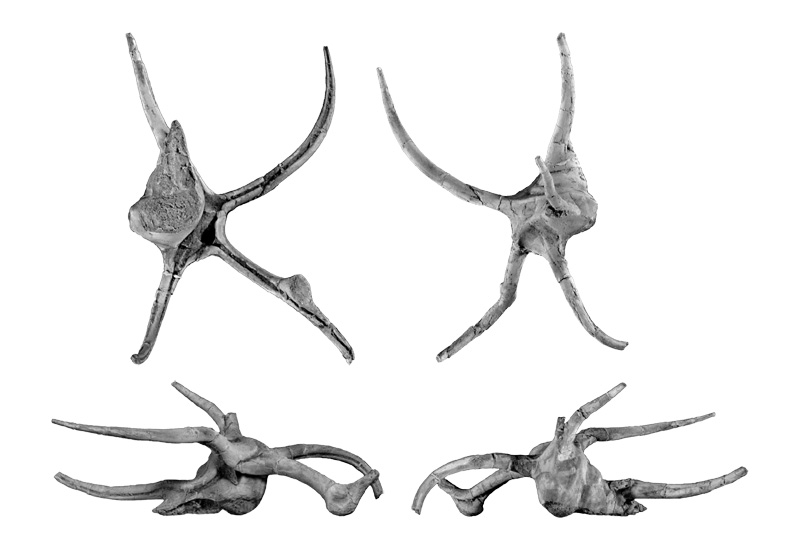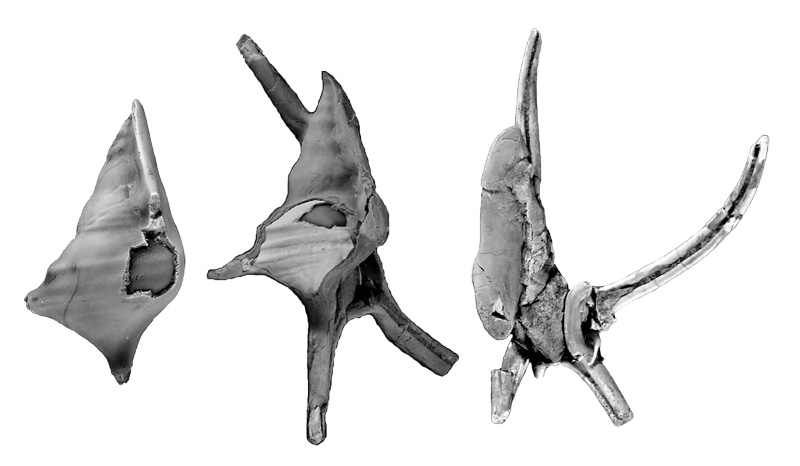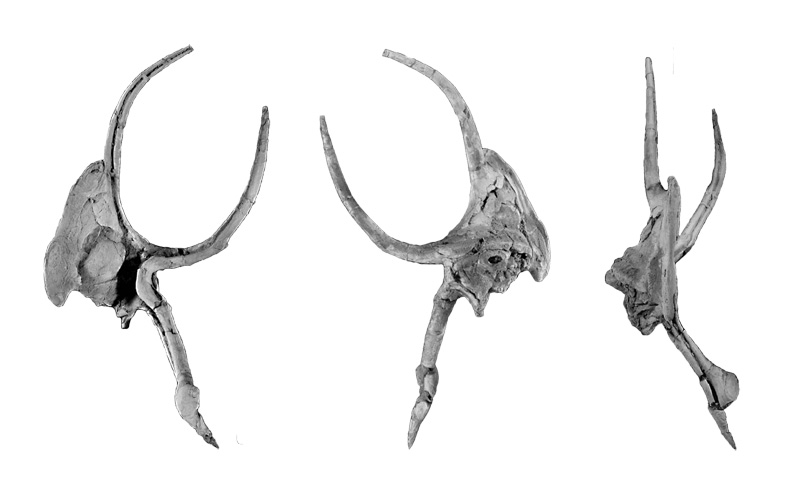Stromboidea
Original Diagnosis of Tessarolax louellae by Squires in Saul & Squires, 2015:
- ”Mature last whorl tricarinate, dorsal spine prominent; callus extensive over entire shell; ablabral callus, ventral callus, and fictavarix merge to form long, blade-shaped callus structure.”
Original Description of Tessarolax louellae by Squires in Saul & Squires, 2015:
- "Shell fragile and thin, up to 88 mm high and 56 mm wide (essentially complete). Pleural angle approximately 37 degrees. Protoconch covered by callus deposit. Teleoconch of six whorls. Suture callused over. Immature shell: Essentially unknown due to callus coverage. Mature shell: Consisting of last whorl, tricarinate, carinae (not noded) equally spaced and nearly of equal strength. Base of last whorl with several weak and moderately widely spaced spiral ribs, decreasing in strength anteriorly. Entire last whorl covered with numerous microscopic and very closely spaced spiral threads between carinae and prominent spiral rib. Aperture moderately narrow. Outer lip extended into four narrow canaliculate digitations. Apical digitation curved, extending along spire but diverting from tip of shell. Posterior and anterior outer lip digitations long, strongly curved, and extending from their respective carinae. Posterior outer lip digitation bending posteriorly. Anterior outer lip digitation extending forward to callus knob, then bending away from substrate. Rostral digitation nearly straight or curved into wide U-shape. Dorsal spine, long and slender, prominently emanating from at or near anterior carina on middle of dorsal side of last whorl and commonly bent. Callus covering shell obscuring two carinae on last whorl and hiding ornamentation. Callus on venter can accentuate convexity (plumpness) of last whorl. Ablabral callus elongate, narrow, extending over apex in small curl, and merging with ventral callus to form long and blade-shaped fictavarix. Growth line opisthocline."
Locus typicus: Phipps Point, Hornby Island, Vancouver Island area, British Columbia Province, Canada
Stratum typicum: Northumberland Formation, uppermost Campanian to possibly lowermost Maastrichtian, upper Cretaceous
Geographic Range: Vancouver Island area, British Columbia Province, Canada to questionably northern California, USA.
Etymology: The species is named in honor of Louella R. Saul for all her many contributions devoted to establishing highly useful details of the geological history of numerous Cretaceous gastropods and bivalves.
Tessarolax louellae Squires, 2015; Holotype; Northumberland Formation, middle late Campanian, upper Cretaceous; Phipps Point, Hornby Island, Vancouver Island area, British Columbia Province, Canada; Coll. RBCM.EH2011.007.0015;Copyright Natural History Museum of Los Angeles County
Tessarolax louellae Squires, 2015; Northumberland Formation, middle late Campanian, upper Cretaceous; Natural History Museum of Los Angeles County
- Left; Paratype; Coll. GSC, no. 5936; Phipps Point, Hornby Island, Vancouver Island area, British Columbia Province, Canada
- Middle; Paratype; Coll. RBCM.EH2011.007.0016; Collishaw Point, Hornby Island off east coast of Vancouver Island, British Columbia Province, Canada
- Right; Paratype; Coll. RBCM.EH2011.007.0017; Collishaw Point, Hornby Island off east coast of Vancouver Island, British Columbia Province, Canada
Tessarolax louellae Squires, 2015; Paratype; Northumberland Formation, middle late Campanian, upper Cretaceous; Collishaw Point, Hornby Island off east coast of Vancouver Island, British Columbia Province, Canada; Coll. RBCM.EH2011.007.0018;
Natural History Museum of Los Angeles County
References:



